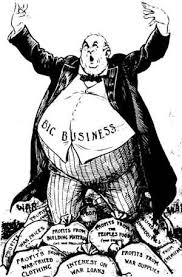 When you think of sales, do you think of pejoratives such as pushy, sleazy and dishonest? Most people do.
When you think of sales, do you think of pejoratives such as pushy, sleazy and dishonest? Most people do.
Yet in “To Sell Is Human: The Surprising Truth About Moving Others,†Daniel H. Pink contends that most of us, regardless of job title or salary structure, are salespeople.
What?
Sales, broadly defined, means moving people to action, which people must do well to be successful.
This “non-sales selling†doesn’t involve a purchase—it simply means persuading, influencing and convincing others. Not only does this comprise 41 percent of total work time, according to an international study with 9,057 respondents that Pink paid for, but people say it’s the most productive use of their time.
While only one in nine Americans works in sales per se, the other eight are selling others on learning chemistry, on using new media for marketing, or on exercising more.
What Pink calls “EdMedâ€â€”healthcare and education—has a large sales component. This is the biggest job sector in the U.S., with more workers than manufacturing, retail and professional and business services, and projected to grow the most.
Pink, following up bestsellers “A Whole New Mind†and “Drive,†wants to clean up its bad reputation and recast sales not as a way to get the best of others, but to improve the world. As he explains the book’s title, “Moving others doesn’t require that we neglect these nobler aspects [idealism and artistry] of our nature . . . Today it demands that we embrace them.â€
Pink’s ABCs Of Sales
Some of Pink’s advice is supported by conventional wisdom but not all; Pink draws heavily upon sometimes surprising social science research.
“Attunement†is the first thing we should learn. If we don’t understand others, how can we hope to persuade them?
It’s about getting into their heads with perspective as well as hearts through empathy. Powerful people are prone to losing touch with others’ perspectives. So paradoxically, reducing one’s power or becoming humble is a must.
Mimicry helps. If you subtly mirror another’s gestures, you will seem more in tune, but if the other person senses your mirroring is staged, he or she will be turned off.
Surprisingly, extroverts don’t make the best salespeople, but neither do introverts.What works best is being an “ambivert,†which is most of us in the middle of the bell curve. Extreme extroverts are often awful listeners and can be pushy, while an extreme introvert can lack initiative and the ability to close a deal. Ambiverts who can tack back and forth between extroversion and introversion do better at attunement.
If you think your failures are “permanent, pervasive and personal,†you lack “buoyancy.†Those who bounce back, says Pink, attribute rejection to circumstances: it’s a slow economy, he’s having a bad day.
Positive emotions are contagious, so when negotiating, taking a friendly tone and smiling works better than being adversarial, despite what’s portrayed in movies. Your positive emotions (gratitude, interest, contentment) should outnumber negative (anger, shame, sadness) by at least 3-1 but not going over 11-1. Too much risks detachment from reality—not taking responsibility for what one can control and learning from failures is important.
It’s less important to motivate yourself with clichés like “I’m the best†than to simply ask, “Can I do it?†A question opens you up to problem solving and boosts confidence.
The final attribute, “clarity,†means the “capacity to help others see their situations in fresh and more revealing ways and to identify problems they didn’t realize they had.â€
Today people often have all the facts at hand—they just need help applying information. For example, maybe you thinks you need a better presence on Facebook when you’ll find more leads elsewhere, or maybe a bad website is actually holding you back more than your social media strategy—redefining the problem to better meet goals is what standout salespeople excel at.
In this paradigm brainstorming trumps quick fixes and the successful sellers are the ones who take the time to develop relationships and understand their clients.
Putting It All Together
“Pitching,†“improvising†and “serving†are three tactics Pink highlights for putting your skills to work.
He identifies six “successors to the elevator pitch†including:
- the one-word pitch: President Obama’s re-election pitch, “forwardâ€
- Reagan’s question pitch: “Are you better off today than you were four years ago?â€
- the memorable rhyming pitch: “If the glove don’t fit, you must acquitâ€
- the email subject line pitch: pithy and specific, “10 Selling Tipsâ€
- the Twitter pitch: don’ts include complaints and “here’s what I had for dinner†(does anyone like hearing that?)
- the Pixar pitch, a six-sentence structure, part of which often introduces a movie’s trailer: “Once upon a time _____. Every day, _____. One day ___. Because of that, ___. Until finally ___.â€
Every sales pitch, Pink shows, can be put into each of these formats.
Pink then visits an improvisational acting coach to understand how improv can expand the repertoire of business people. In her hilarious memoir “Bossypants,†Tina Fey also elaborates on how improv comedy works. Here’s the basics, per Pink:
- Say “yes and,†not “yes butâ€
- Make your partner look good
- Hear offers
The final suggestion, in what I consider the takeaway of this book, is to be a server, not a taker. Don’t “upsell,†which is a “detestable†word; “upserve,†he exhorts. Treat everyone as you’d treat your grandmother. Rethink the idea of sales commissions.
Â
Â
By Linda Rastelli
DealerNet Services
Â
Â
Â
Listen To Your Mother: Advice For Making The Sale On Your Website (Part 2)
Tags: A wise person would have taken my mother’s advice the first time.
A wise person would have taken my mother’s advice the first time.
Alas, when it comes to shopping online there are hurdles and derailments in every corner, waiting to sabotage your efforts. And my mother finds them all.
Why does that matter?
Because my mother is retired and she has a laptop that goes everywhere with her, from home to vacation home. She’s not very tech-savvy but she’s quick with a mouse and has a disposable income. In other words, she’s your customer.
Or she could be, if you didn’t screw the whole thing up so badly!
It’s been three years since my mother and I began our phone ritual of her complaining about a website and me writing it down.
She’s had a lot to say about customer service along the way and plenty on the subject of websites that don’t work.
She may be just one person but where there’s one there are more. They visit your website and silently leave, never to be seen or heard from again. They may not vocalize their frustrations but they’re certainly acting on them – or failing to act, by refusing to buy from you.
If you’re not convinced, just listen to my mother…
Mother Says: What The Heck Is It?
“People should try to shop on their own sites,†she says. “Do you think they’d buy something if they had no idea what it was?â€
She’s talking about the shower curtain.
She wants a new one for the guest bathroom in her vacation home. Her vacation home is strictly beach-themed. And the shower curtain she wants has a pattern of small… somethings… that may or may not fit with the theme.
“Is it a duck? Maybe it’s a seahorse. I have no idea.â€
Maybe you’ve been there. Maybe you’ve tried to shop for anything from home décor to clothing and been unable to discern polka dots from plaid, or in this case, ducks from seahorses.
“Sites need a zoom feature. You can’t just look at something that small and say, ‘Oh, ok, I guess it’s fine…’ You have to know what you’re buying. Do you know what I did? I got a magnifying glass.â€
She says this with a mix of disgust and triumph – how dare “they†make her resort to such stupid tactics, but kudos to her for thinking of it.
“You know what it was? A seagull! A big, fat, ugly seagull!â€
If there’s one thing my mother hates it’s birds of any sort. If there’s another thing that pulls in at a close second it’s being forced to interpret some aspect of a product that should have been clearly identified by the “click to zoom†function or mentioned somewhere in the product description.
And my mother may hate birds but she is really pissed by the effort involved in discovering the birds. The birds have come to represent the entire site. And she’s totally gone.
“And do you know what else?â€
The thing about crummy websites is that there is usually a “what elseâ€.
“Half the time the alternate colors don’t work. So when you see a color called ‘majestic’ how the heck are you supposed to know what that looks like? What the heck color is ‘majestic’?â€
I have to admit, I have no idea.
If You Want Her To Buy, You’d Better Show Her What It Is
I don’t think this is an issue that needs belaboring. If you haven’t figured out by now that your product photos matter then you can go back and read her previous complaints to the same effect.
Or you can try shopping your own site and looking objectively at your seahorse/duck/bird patterns to be sure another human being – perhaps one with imperfect eyesight – can tell what they are.
And for the sake of overburdened brains everywhere, avoid cute marketing-y sounding descriptions in favor of real ones. If you need help crafting product descriptions, go read this post.
No matter how you slice it, “majestic†is not a color.
Lesson Learned: Details Matter
It could be the indecipherable photos or indescribable colors. Or maybe even the lack of photos and color details. If you’re not paying attention to how your products appear to your customers you just may not have any customers to worry about.
It’s definitely tough to be objective about your own inventory so do yourself and your sales a favor and find an outsider to give you honest feedback.
It could be as simple as recruiting your mother.
Â
Â
A colleague, cousin or Twitter acquaintance will do just as nicely – as long as they are dead honest and maybe even a little nitpicky. Because trust me, your customers will be.
by Carol Lynn Rivera
DealerNet Services
Â
Â
Â
Why Entrepreneurs Are Animals—And How That Can Help You Get Ahead
Tags:
Ever regretted a business decision you made in the heat of the moment?
Most of us have. And most of us have felt the urge to yelp with excitement when we win a big success, too.
That’s your inner animal at work. Literally at work; you don’t leave it behind when you’re taking care of business!
You might like to think you’re a cool, clear-headed entrepreneur making rational decisions, but what’s really going on underneath is a bit… messier. Whether you know it or not, you’re acting and reacting just like an animal.
Here’s why:
Why Entrepreneurs Are Animals
Your business decisions are strongly influenced by your hormonal state. Yep, even if you’re a man. In fact, the effect is typically stronger in men, because a lot of it is testosterone-based.
John Coates, a Wall Street trader turned neuroscientist, found that fluctuating testosterone and cortisol levels have a massive influence on the decisions we make. He’s seen the effects first-hand on the trading floor, and his research shows that we’re no different than other animals in our hormonal behavior.
Testosterone is released into your bloodstream during a victory, a risk or a competition. It’s like a chemical battle cry that echoes through your blood, your brain and your body.
In times of stress and uncertainty, your body produces cortisol, which has the opposite effect. It’s calming in small amounts, but too much leaves you feeling exhausted, anxious and depressed.
What does this all mean for your professional life? Well, if everyone’s decisions are influenced by their hormonal state, you can use that knowledge to further your ambitions.
Understand Your Inner Animal to Get Ahead
Coates calls it the “winner effectâ€: the excitement of competition and success prompts your body to produce testosterone. That influences your brain to make riskier decisions, and for a while you keep winning bigger and bigger, smashing through targets like a charging rhino.
In the end, of course, overconfidence turns one of those optimistic gambles into a failure. You kick yourself (how did you fail to see it coming?) as cortisol floods into your bloodstream, making you anxious and miserable.
You try to protect yourself by avoiding further risk, which means you miss out on worthwhile opportunities until your hormones level out and you regain your confidence. If this had a name, I guess it would be the “loser effect.†But don’t worry; you can turn it around!
Once you know how your hormones affect your judgement, you can consciously correct for these effects and keep your business decisions on a more even keel:
- When you’re feeling cortisol-stuffed and risk-averse, remind yourself to look rationally at any trade-offs you’re considering. If the benefit is high and the risk is small, maybe you should give it a chance!
- Remember that asking for help when you need it is a sign of professional strength, not weakness. Don’t let a cortisol downer isolate you from your support network.
- Understand that a little bit of testosterone and risk does you good, making you more productive and successful at work—as long as you’re not overdoing it.
- When you’re feeling on top of the world with a testosterone high, remember that it’s a long way down! Rein in your risk-taking urges a little and consult with colleagues or friends to find out if they think your plans are genius or just plain nuts.
- Notice when your hormones are being manipulated to influence your decisions. Brands likeThe Sales Lion and Shark Tank, for example, aren’t named after large predatory animals by sheer chance; they’re designed to appeal to the testosterone in an ambitious entrepreneur like you!
Learn to Tame the Animal in Others
You aren’t the only one who gets hormonal, you know. It’s every single one of us.
We get angry, tearful, euphoric or nervous because our hormones overrule rational thought. Every business meeting or transaction is influenced by these biological factors, so let’s learn to work with that.
If you know a contact or colleague has just suffered a setback in their business or personal life, remember that cortisol will make them less interested in opportunities that carry any kind of risk. You might want to offer brief, friendly condolences and wait a while before bringing them your latest proposal. Or perhaps you can frame your idea as a risk reduction. “Let me take responsibility for X and you’ll never have to worry that it’s been overlooked again†could work pretty well at a time like this.
The flip side of this is to press your advantage when you know someone’s on a testosterone roll. They’ll be feeling exuberant and generous in victory, so make the most of it. In other words, ask for a raise or promotion the day your boss wins an award, and you’re more likely to get your wish!
Whatever your ambition, understanding our animal biochemistry will help you to achieve it. Armed with this knowledge, you can survive even the worst moments of your career with dignity and take full advantage of the best.
You’re an animal. Recognizing that gives you power. Use it wisely, and you’ll be unstoppable!
Sophie Lizard is a freelance blogger and copywriter on a mission to help entrepreneurs boost their income and professional reputation by blogging for hire. Download her free Ultimate List of Better-Paid Blogging Gigs to get started with 45 blogs that pay $50 or more!
 First of all, let me preface this by saying that it seems to me that the vAutos, Autotraders and True cars of the world are trying to commoditize the automotive industry. This may work well for the corporate owned multi-franchise companies but for the rest……
First of all, let me preface this by saying that it seems to me that the vAutos, Autotraders and True cars of the world are trying to commoditize the automotive industry. This may work well for the corporate owned multi-franchise companies but for the rest……Advances in technology are giving dealers the tools to directly market through their own websites, Social media, etc. and within their geographic area to increase floor traffic at their location. Once there they must have the confidence in their sales force to get the job done.
A good sales management team knows their market and has the tools in house to know what is selling for them and how to effectively control their inventory. My question is why are dealers paying big money to let companies come in and tell them how much to sell and/or buy their vehicles for and what vehicles to buy to increase sales. What are you paying management for? One day I overheard a rep from Autotrader tell the preowned manager that he needed to lower his prices to get better results.
That preowned manager bucked the trend of lowering prices to compete online. - And guess what- average grosses in his department were much higher than the average and his total unit sales were improving. Number one that is why you have a “good†sales staff and “good†finance people for and number two you can always come down in price but I never heard a customer say a price was too low.
Dealers should work with a marketing company who is going to help them drive traffic and not try to run their company. The bulk of dealerships sales are still made within their geographic area and that is where they should be focusing.
Author Bill Cosgrove
http://dealernetonlineservices.biz
Â
Closed Loop Analytics Can Improve Your Automotive Marketing
Tags: One of the most important elements of any marketing plan is the ability to track the effectiveness of new initiatives. Â
One of the most important elements of any marketing plan is the ability to track the effectiveness of new initiatives.  The ability to compare conversions prior to and following changes in an email or direct mail campaign can indicate whether you are receiving an adequate return on your marketing investment. One of the most valuable methods for determining ROI is closed loop analytics, which provides key metrics of marketing initiatives.Â
In most inbound marketing strategies, analytics play a critical role. However in an email or direct mail campaign, automotive closed loop analytics can provide insights that can springboard your marketing to new levels of success. Â
The metrics of automotive closed loop analytics can measure a variety of results including website visits, showroom visits and purchases.  Depending on the granularity of your metrics, you may also be able to determine specific characteristics of these interactions like age group, income, or level of enthusiasm.Â
Comparing the results from before and after an email or direct mail campaign can help you identify the most important components of your new initiatives and expand them, including:
-
Long-term results—Automotive closed loop analytics can provide
 results throughout the lifetime of your company. Once you have
implemented an analytics system that integrates your email or direct mail
campaigns with your CRM system, you can
continuously receive insights. As your needs or objectives evolve, you
 can modify the resolution of your analytics to help identify the most lucrative
 consumer markets. -
Agile system—Most closed loop systems are easily modified to allowÂ
virtually immediate results from an email campaign. If you would like to
know how many people clicked on a Call-to-Action (CTA) in the latest batch of
emails, then you only need to click a button. This type of responsiveness
may require additional investment up front, but the data available can help
make your dealership a success for years to come. -
Identify key marketing ideas—One of the most elusive objectives in
 any marketing strategy is identifying the marketing message that is most
 effective. Automotive closed loop analytics can instantly identify those
 components and help you understand why they are so successful. For
example you may find lifetime service options are a key to maintaining customer
 relationships which bolster sales. -
Unique metrics—Measuring ROI on direct mail has been difficult in the
 past, but with the use of new techniques like showroom controls or dedicated
 phone lines, you can accurately measure how effective your new initiative
is.  Using a phone number exclusively for direct mail responses and
coupons with RFIDÂ tags can indicate the precise number of reactions with a
relatively low cost.
Inbound marketing strategies are designed to coax consumers who are already interested in purchasing a car find your business and make a purchase.  With the aid of automotive closed loop analytics, you can refine your marketing strategy to identify those consumers who are most likely to lead to a sale. Â
If you would like some more tips on how to integrate automotive closed loop analytics into your email and direct mail initiatives, download our Automotive Marketing eBook:
If you would like some more tips on how to integrate automotive closed loop analytics into your email and direct mail initiatives, download our Automotive Marketing eBook:Â
http://info.palmeradagency.com/get-more-car-buyers?hsCtaTracking=890b950d-728f-49b4-8203-bf891fa354c9%7C0a330377-b367-4e68-86bb-b1c733f5e9fc
http://dealernetservicesonline.biz
Closed Loop Analytics Can Improve Your Automotive Marketing
Tags:The ability to compare conversions prior to and following changes in an email or direct mail campaign can indicate whether you are receiving an adequate return on your marketing investment. One of the most valuable methods for determining ROI is closed loop analytics, which provides key metrics of marketing initiatives.Â
In most inbound marketing strategies, analytics play a critical role. However in an email or direct mail campaign, automotive closed loop analytics can provide insights that can springboard your marketing to new levels of success. Â
The metrics of automotive closed loop analytics can measure a variety of results including website visits, showroom visits and purchases.  Depending on the granularity of your metrics, you may also be able to determine specific characteristics of these interactions like age group, income, or level of enthusiasm.Â
Comparing the results from before and after an email or direct mail campaign can help you identify the most important components of your new initiatives and expand them, including:
-
Long-term results—Automotive closed loop analytics can provide
 results throughout the lifetime of your company. Once you have
implemented an analytics system that integrates your email or direct mail
campaigns with your CRM system, you can
continuously receive insights. As your needs or objectives evolve, you
 can modify the resolution of your analytics to help identify the most lucrative
 consumer markets. -
Agile system—Most closed loop systems are easily modified to allowÂ
virtually immediate results from an email campaign. If you would like to
know how many people clicked on a Call-to-Action (CTA) in the latest batch of
emails, then you only need to click a button. This type of responsiveness
may require additional investment up front, but the data available can help
make your dealership a success for years to come. -
Identify key marketing ideas—One of the most elusive objectives in
 any marketing strategy is identifying the marketing message that is most
 effective. Automotive closed loop analytics can instantly identify those
 components and help you understand why they are so successful. For
example you may find lifetime service options are a key to maintaining customer
 relationships which bolster sales. -
Unique metrics—Measuring ROI on direct mail has been difficult in the
 past, but with the use of new techniques like showroom controls or dedicated
 phone lines, you can accurately measure how effective your new initiative
is.  Using a phone number exclusively for direct mail responses and
coupons with RFIDÂ tags can indicate the precise number of reactions with a
relatively low cost.
Inbound marketing strategies are designed to coax consumers who are already interested in purchasing a car find your business and make a purchase.  With the aid of automotive closed loop analytics, you can refine your marketing strategy to identify those consumers who are most likely to lead to a sale. Â
If you would like some more tips on how to integrate automotive closed loop analytics into your email and direct mail initiatives, download our Automotive Marketing eBook:
If you would like some more tips on how to integrate automotive closed loop analytics into your email and direct mail initiatives, download our Automotive Marketing eBook:Â
http://info.palmeradagency.com/get-more-car-buyers?hsCtaTracking=890b950d-728f-49b4-8203-bf891fa354c9%7C0a330377-b367-4e68-86bb-b1c733f5e9fc
http://dealernetservicesonline.biz

Google SEO SECRETS: you only need 9 back links
WATCH THIS VIDEO:
http://dealernetservicesonline.biz/3/post/2013/07/google-seo-secrets-you-only-need-9-back-links.html
Â
Â
Â
Face-to-face sales interactions are typically viewed as the most valuable activity by Sales Leaders. 5 years ago they were right. Nothing was more important than executing in the trenches. But during those times, the trenches were out in the field. In this post  we will explore how the trenches have changed. Today, getting in the door is more difficult than executing face-to-face sales calls.
we will explore how the trenches have changed. Today, getting in the door is more difficult than executing face-to-face sales calls.
Today your sales people have multiple product specialists, overlays, and management support. But these resources don’t engage until they get in front on someone. The vast majority of training is focused on selling once you are face-to-face. But buyers are much more informed today. This fact makes getting in the door more than half the battle.
The primary differentiator of today's top Sales Rep is the ability to prospect. This could be prospecting for new business or different buying centers within existing customers. Both are difficult. Both are where the potential is. Managing a relationship or taking orders from existing customers are table-stakes. Opening new doors is a unique and difficult skill. Few are really good at it.Â
We have captured 5 modern prospecting best practices from top performers. Download this tool to rapidly improve your prospecting results.Â
I recently had a discussion with a Sales Leader about his team’s ability to prospect.Â
He told me that, “Prospecting is a basic skillset all my reps should have.â€
I asked what skills he was referring to. He couldn’t articulate their prospecting strategy. He basically told me they should make cold calls and “beat the streetsâ€. I then asked how they make phone calls and what their success rate is. He gave me a blank stare. "What do you mean? They call and explain who they are and why they are calling. Then they ask for an appointment."
As shocking as this example may seem, it is the norm. A majority of sales people are terrible at prospecting. They call the same buyer each week hoping something has changed. They open a phone call with what their company provides. They knock on a door and leave a business card. The success rate using outdated methods and poor messaging is under 5%. And Sales Managers wonder why their people aren’t prospecting.
Â
Why do sales people inflict so much pain on themselves?
Â
- They are instructed to use outdated prospecting techniques
- They are resistant to change and make excuses such as, “our buyers aren’t on social mediaâ€
- Most sales training is focused on execution once in the door
- Organizations inhibit the use of modern prospecting methods
- They make the mistake of relying on someone else to prospect
Â
How to get in the door:
Â
- Approach the right doors - some doors aren’t worth approaching. Is your sales team focused on customers with the highest potential to buy your solution? Or do they call on low value prospects and saturated customers? Clearly define your target audience first.Â
- Buyer Centric Messaging - have you ever had a feeling that an advertisement was meant for you? It may have been 1 out of 100 advertisements. The goal is to make every communication speak directly to your buyer. You should understand them so well they think you have their job. Speak directly to the buyer’s fears, objectives, and personal wants.
-
Use Social Listening – understand what your buyer cares about.
  Is there a better way than watching their behavior first hand? This works whether using social prospecting, email, or phone. Your buyers will give you the answer to the test and you aren’t cheating.Â
 Is there a better way than watching their behavior first hand? This works whether using social prospecting, email, or phone. Your buyers will give you the answer to the test and you aren’t cheating. - Refine Writing Skills – produce succinct, clear, and compelling copy that drives an actionable response. Think of how many more emails you send than conversations you have each day. We communicate via the written word much more frequently than orally. Yet we focus most of our time on improving oral communication skills. Your prospects spend more time reading about you than listening to you.Â
- Incorporate Social Prospecting – LinkedIn is not a clogged channel. Email and the phone are. You can use relationships to get access to buyers. Using social is more effective and less painful than cold calling.
Use this tool to spread these best practices across your sales organization. Prospecting can be enjoyable and effective if approached correctly.
 The thing to remember about SEO is that it is long term, so once you’re ready to strap in for the long haul get comfortable because it’s going to be a forever ride. As an SEO professional I want to help site owners navigate the murky and sometimes confusing waters of their SEO campaign, and a big part of that is making sure you’re ready for what’s ahead. I’ve found that getting into the right SEO mindset and knowing what to expect down the road goes a long way in helping you and your website overcome many hurdles and survive for the long haul. Here are 4 pieces of advice for those new to SEO.
The thing to remember about SEO is that it is long term, so once you’re ready to strap in for the long haul get comfortable because it’s going to be a forever ride. As an SEO professional I want to help site owners navigate the murky and sometimes confusing waters of their SEO campaign, and a big part of that is making sure you’re ready for what’s ahead. I’ve found that getting into the right SEO mindset and knowing what to expect down the road goes a long way in helping you and your website overcome many hurdles and survive for the long haul. Here are 4 pieces of advice for those new to SEO.Related: Outsource your SEO to an online marketing firm.
1. There is no need to be overwhelmed with information.
A quick search for “SEO blog†in Google tells me that there are 358,000,000 results. That’s probably more SEO knowledge than any one person could possibly know (let alone read) so where is a new to SEO site owner or marketer supposed to start? My advice is to start with the Bing and Google Webmaster Guidelines and official webmaster blogs, then work your way through some of the top SEO sites and blogs like Search Engine Land, ClickZ, and the Moz Blog. These are some of the sites that SEO folks rely on and they are a great source for trusted information.
With so many SEO blogs, professionals, companies, consultants and more out there it is hard to know who to trust/listen to, so high-profile industry sites are a great place to start learning who the “gurus†are. Don’t expect to learn everything there is to know about SEO in one fell swoop either. I’ve been doing this for 13 years and still learn new things almost every day!
2. Focus on building a strong SEO foundation before worrying about the “hot†tactic.
If you wanted to build a pyramid, aside from 10,000 or so slaves to do the heavy lifting, you would start from the bottom and work your way up, right? It’s kind of hard to start with the cap of the pyramid and work your way down. The same holds true for SEO. Focus on getting a strong foundation and worry first about optimizing your website for your visitors and the search engines, creating content that demonstrates your authority, and building up a quality link profile. Don’t fret over the “hot†SEO tactics until you have your feet on solid ground with the basics. Though some tactics may change a lot of the fundamentals of SEO stay true, even in the face of algorithm updates.
Related: Don’t Kill Your Online Marketing with Bad SEO
3. It’s not SEO or social; it’s SEO AND social.
It’s a positive feedback look with SEO, social media marketing and content marketing. The content you create to propel your SEO forward can also be used to fuel your social media marketing and promotion efforts. Great content gets shared, liked, tweeted, posted and so forth on social networking sites, generating social signals which the search engines factor into their ranking algorithm, helping improve your organic SEO presence. The more active you are in social media the more your content gets seen and the more valuable your website becomes in the eyes of the search engines in time.
Related: How Do Small Social Communities Help Your SEO?
4. Slow and steady wins the race (even if it doesn’t feel like it).
I’ve spoken with a lot of site owners that feel like their competition isn’t playing by the rules and yet somehow they are still winning! And sometimes they are right. The search algorithm isn’t perfect and as that old adage goes; when you build a better mousetrap someone creates a smarter mouse. There will always be people taking advantage of the system and exploiting loopholes but in my experience, sooner or later, those people get caught. Your site, your online brand, and the future of your business are not worth the risk that comes with SEO shortcuts. Stick to the rules as best as you can and you’ll earn your organic spot and the traffic that comes with it in time.
By Nick Stamoulis
http://dealernetservicesonline.biz
Â
 The thing to remember about SEO is that it is long term, so once you’re ready to strap in for the long haul get comfortable because it’s going to be a forever ride. As an SEO professional I want to help site owners navigate the murky and sometimes confusing waters of their SEO campaign, and a big part of that is making sure you’re ready for what’s ahead. I’ve found that getting into the right SEO mindset and knowing what to expect down the road goes a long way in helping you and your website overcome many hurdles and survive for the long haul. Here are 4 pieces of advice for those new to SEO.
The thing to remember about SEO is that it is long term, so once you’re ready to strap in for the long haul get comfortable because it’s going to be a forever ride. As an SEO professional I want to help site owners navigate the murky and sometimes confusing waters of their SEO campaign, and a big part of that is making sure you’re ready for what’s ahead. I’ve found that getting into the right SEO mindset and knowing what to expect down the road goes a long way in helping you and your website overcome many hurdles and survive for the long haul. Here are 4 pieces of advice for those new to SEO.Related: Outsource your SEO to an online marketing firm.
1. There is no need to be overwhelmed with information.
A quick search for “SEO blog†in Google tells me that there are 358,000,000 results. That’s probably more SEO knowledge than any one person could possibly know (let alone read) so where is a new to SEO site owner or marketer supposed to start? My advice is to start with the Bing and Google Webmaster Guidelines and official webmaster blogs, then work your way through some of the top SEO sites and blogs like Search Engine Land, ClickZ, and the Moz Blog. These are some of the sites that SEO folks rely on and they are a great source for trusted information.
With so many SEO blogs, professionals, companies, consultants and more out there it is hard to know who to trust/listen to, so high-profile industry sites are a great place to start learning who the “gurus†are. Don’t expect to learn everything there is to know about SEO in one fell swoop either. I’ve been doing this for 13 years and still learn new things almost every day!
2. Focus on building a strong SEO foundation before worrying about the “hot†tactic.
If you wanted to build a pyramid, aside from 10,000 or so slaves to do the heavy lifting, you would start from the bottom and work your way up, right? It’s kind of hard to start with the cap of the pyramid and work your way down. The same holds true for SEO. Focus on getting a strong foundation and worry first about optimizing your website for your visitors and the search engines, creating content that demonstrates your authority, and building up a quality link profile. Don’t fret over the “hot†SEO tactics until you have your feet on solid ground with the basics. Though some tactics may change a lot of the fundamentals of SEO stay true, even in the face of algorithm updates.
Related: Don’t Kill Your Online Marketing with Bad SEO
3. It’s not SEO or social; it’s SEO AND social.
It’s a positive feedback look with SEO, social media marketing and content marketing. The content you create to propel your SEO forward can also be used to fuel your social media marketing and promotion efforts. Great content gets shared, liked, tweeted, posted and so forth on social networking sites, generating social signals which the search engines factor into their ranking algorithm, helping improve your organic SEO presence. The more active you are in social media the more your content gets seen and the more valuable your website becomes in the eyes of the search engines in time.
Related: How Do Small Social Communities Help Your SEO?
4. Slow and steady wins the race (even if it doesn’t feel like it).
I’ve spoken with a lot of site owners that feel like their competition isn’t playing by the rules and yet somehow they are still winning! And sometimes they are right. The search algorithm isn’t perfect and as that old adage goes; when you build a better mousetrap someone creates a smarter mouse. There will always be people taking advantage of the system and exploiting loopholes but in my experience, sooner or later, those people get caught. Your site, your online brand, and the future of your business are not worth the risk that comes with SEO shortcuts. Stick to the rules as best as you can and you’ll earn your organic spot and the traffic that comes with it in time.
By Nick Stamoulis
http://dealernetservicesonline.biz
Â
CALENDAR
CATEGORIES
TAGS
TWITTER POSTS
CALENDAR
- powered by
- One Big Broadcast
- creative by
- WebStager
© 2025 One Big Broadcast | All rights reserved
